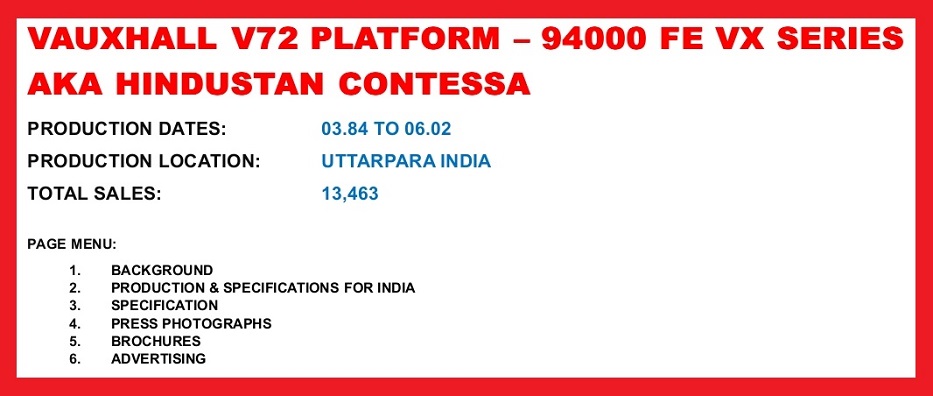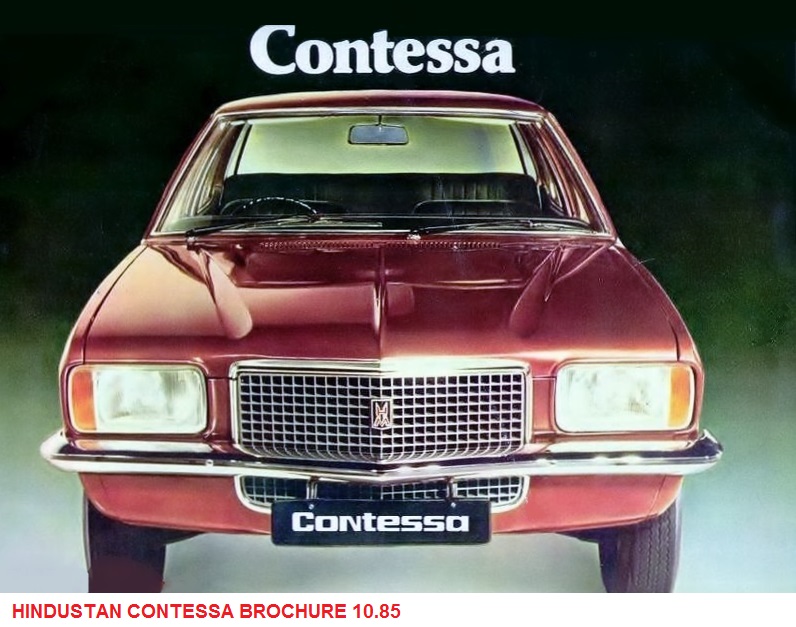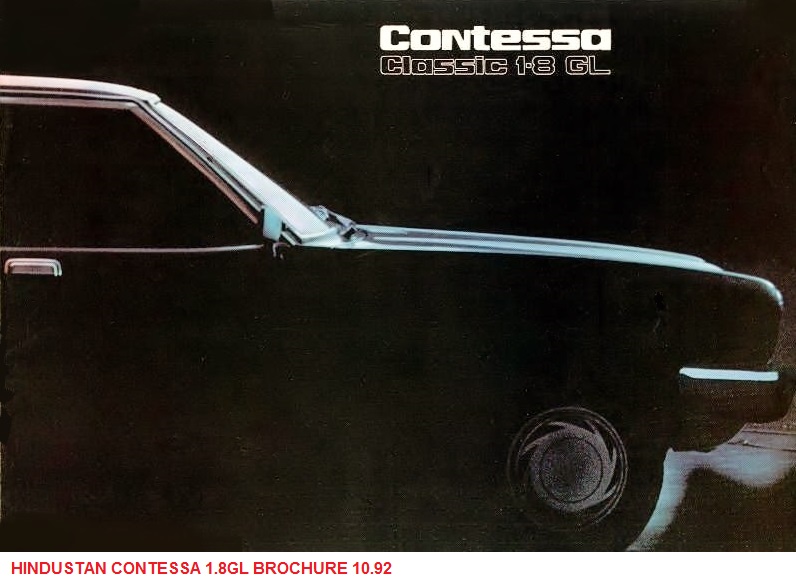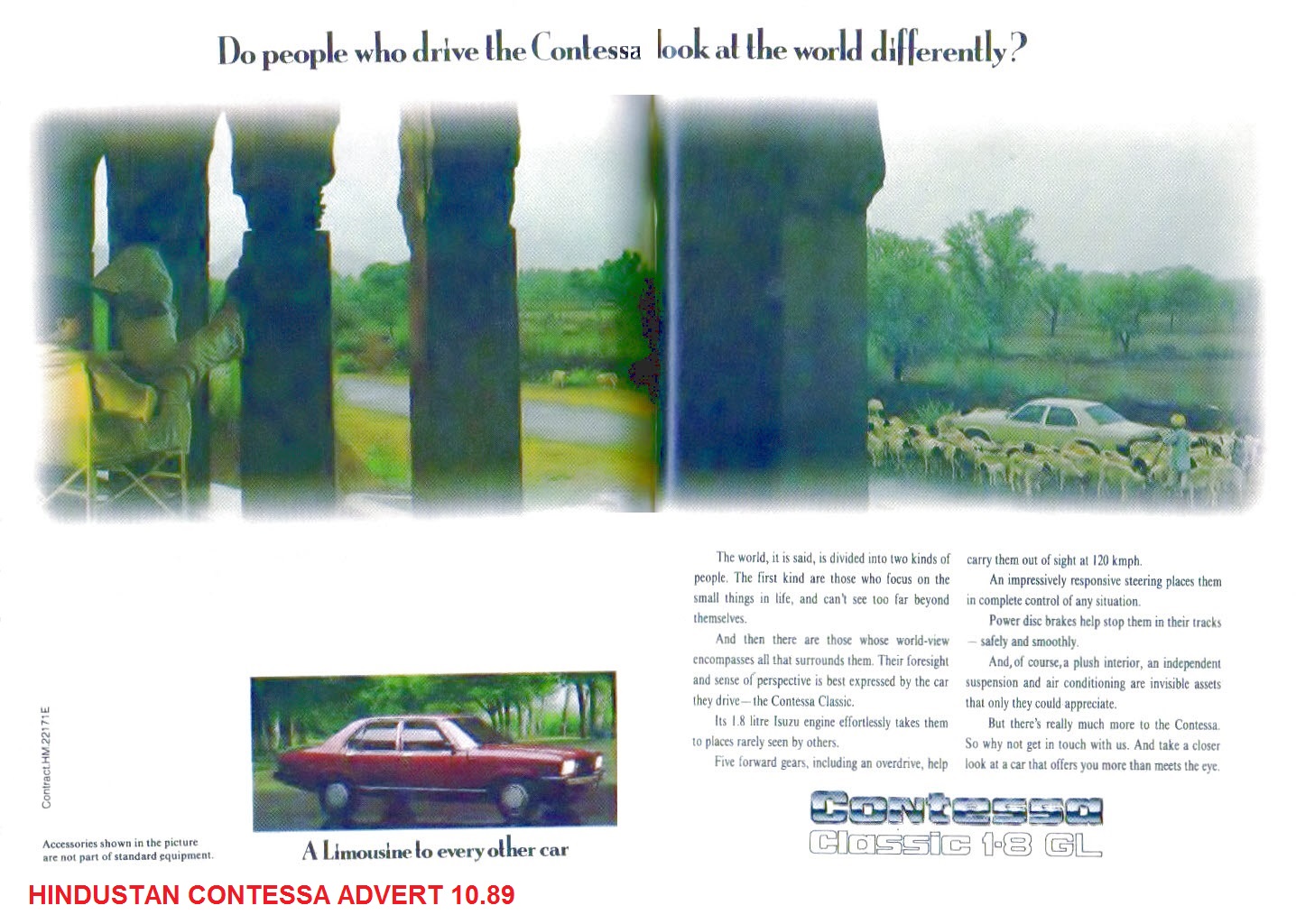

1. BACKGROUND:

When production
of the FE VX Series finished in July 1978 Vauxhall, in common with
all motor manufacturers, were legally bound to supply body parts
and panels for the cars up to five years after production ceased
and ten years in the case of service items such as brakes,
headlights etc. In the case of service parts it was not too much of
a problem because the Bedford CF would continue to use the engine
until 1984 and then Vauxhall would need to supply parts until 1994
– no problem. However, Vauxhall were approached in 1979 by
Hindustan Motors in India who were interested in acquiring the body
for production in India as an upmarket car to complement their
ancient Ambassador which was based on the 1956 Morris Oxford III
and had been in production since 1958. Hindustan wanted all the
tooling and presses for the entire body, some ancillary systems and
also the dashboard assembly which then left Vauxhall with a problem
that they would risk not being able to honour their legal
obligation for supplying some body parts. The solution was
interesting – as Hindustan were not planning to start series
production until 1984 and so agreed to supply any body panels that
Vauxhall needed, although a large stock pile had been built up by
Vauxhalls Parts Centre at Toddington prior to the tooling being
shipped to India in 1980. The cost to Hindustan was £1.5m including
all the blueprints for
manufacture.
2. PRODUCTION & SPECIFICATIONS FOR INDIA:

One thing Vauxhall did not relinquish to Hindustan in the deal was the rights to use the Victor, VX4/90, Ventora & VX Series model names, strange because Vauxhall have not used any of them since although the fact that they are now using the Viva name again means perhaps they were covering all eventualities, in any event Hindustan had their own name in mind they were going to use – Contessa. A separate production line was set up alongside the Hindustan Ambassador at the main Uttarpara manufacturing plant. In August 1980 an engineering team was tasked with making the mechanical changes which was mainly the engine & transmission, they also used as many locally produced parts to replicate the interior and dashboard. Three Indian built prototypes were handmade in March 1981 and subjected to extensive testing which successfully proved the car to be reliable and so by March 1982 10 pre-production test cars were made ready for evaluation by the Indian press and the car was christened Contessa. When the VX Series was built at Luton the production process was not state of the art but the
quality of output was better by comparison with plants such as Dagenham or Longbridge, however the production line set up at Hindustan was very primitive by comparison, the cars were essentially hand built but on a labour intensive production line that hardly moved and the quality of fit and finish was substantially worse than a Luton built VX Series.

It cannot be underestimated the impact the car had, a new car by India’s main car manufacturer was very big news at the time and also caused concern that it was going to replace the Ambassador which it was never intended to do. In design the FE VX Series had started to look dated by the time it was withdrawn in July 1978 but in India compared to the Ambassador it was almost space age! The only indigenous competitor was the short lived Standard 2000 which was based on the Rover SD1. Unfortunately, under the “space age” skin were “medieval” mechanicals! In order to save development & production costs the Contessa was fitted with Hindustan’s locally produced 1489cc BMC B Series engine that dated back to 1953 and a version of a BMC 4 speed gearbox from the same era with no synchromesh on 1st gear. The engine produced 50bhp with the standard compression ratio but a “high output” 54bhp engine was available with a higher 8.3:1 compression ratio.
The Indian press were impressed by the exterior design, the quiet, roomy & very comfortable interior and also the ride & handling, it was only the second Indian produced car with independent front suspension and the first with servo assisted dual circuit front disc brakes, rack & pinion steering was a rarity as well. What nobody was impressed by was the engine and prehistoric gearbox combination, the car was grossly underpowered with a top speed of 75mph and a 0 to 60mph time that could be measured on a calendar. Surprisingly, the car did not enter series production until March 1984 and in that time Hindustan made no attempt to address the cars mechanical shortcomings.

Sales got off to a slow start with most cars going to government and municipal officials where the complete lack of performance was not a hindrance. Hindustan knew that any further development of the B Series engine would give limited results and so in 1985 Hindustan started negotiations with Isuzu of Japan to locally manufacture engines and gearboxes for use in the Contessa and later in the Ambassador, these were concluded in August 1986 and gave Hindustan the rights to locally produce the Isuzu 1.8litre 4ZB1 petrol engine and associated 5 speed gearbox. In October 1987 Hindustan launched the revised Contessa Classic 1.8GL with the new engine & gearbox along with updated grille & bumpers. The car was an instant sales success and set new standards for refinement, power and luxury in the Indian market, the ex-BMC engine was dropped at the same time. The basic design of the Contessa remained essentially the same throughout the model’s life although there were minor updates to the specification with items such as power windows, power steering, larger bumpers, updated headlights and air conditioning all with the aim of keeping the Contessa competitive in the Indian premium car market.
In the 1990 Hindustan started manufacturing the 2.0litre Isuzu 4FC1 diesel engine and in 1996 an Isuzu 4FC1-T turbo diesel version was also added to the range which all proved popular with customers. However, the Indian car market was now becoming attractive for other multi-national car companies such as GM, Ford & Fiat, the most successful of these was Suzuki who teamed up with Indian manufacturer Maruti Tata and grabbed a major stake in the market by offering modern, small fuel efficient cars ideal for the Indian market. As demand for the Contessa continued to slide Hindustan stopped production in 2002. The final model range comprised of three models: Contessa 1.8GLX (Isuzu petrol), 2.0DLX (Isuzu diesel) and 2.0TD (Isuzu turbodiesel).
3. SPECIFICATIONS:

4. PRESS & OWNERS PICTURES:










5. BROCHURES:










